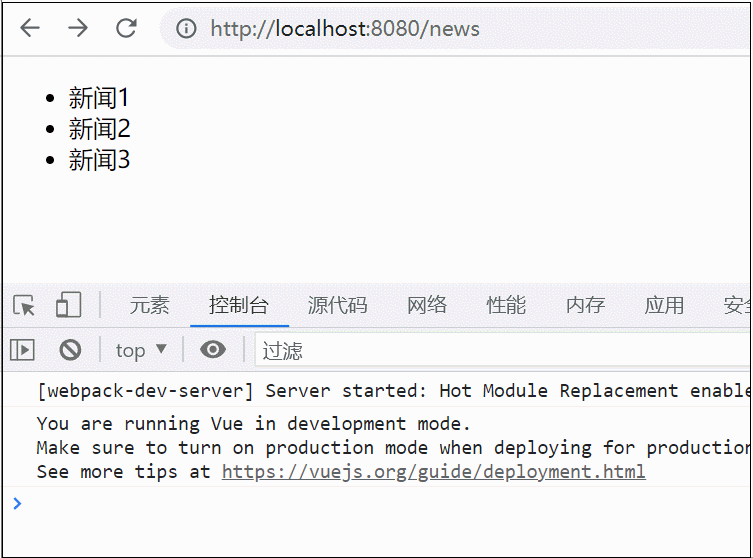再看那柔弱的柳树吧,在寒冬余威尚盛时节,就早早苏醒过来,望着冰冻的河面,迎着凛冽的寒风,它微微察觉出一丝春意,于是,不顾一切地率先吐翠,淡淡地披起娇黄嫩绿的新装。沿河望去,枝梢间烟纱雾彀,一片生机,这情景仿佛一首动人的歌,一首热烈向往春天的歌,一首报告春的信息的歌,一首表达美好信念的歌。我在想:既然迎春花被人称作报春花,那么,柳树可不可以叫作报春树呢春来了,万千柳枝在春风中袅袅舞动。柳树是热爱春天的,春天也是热爱柳树的。
问题
在我们的 vue 项目中(特别是后台系统),总会出现一些需要多业务线共同开发同一个项目的场景,如果各业务团队向项目中提供一些公共业务组件,但是这些组件并不能和项目一起打包,因为项目中不能因为某个私有模块的频繁变更而重复构建发布。
^_^不建议在生产环境使用,代码包含eval
思路
在这种场景下我们需要将公共的业务组件部署到服务端,由客户端请求并渲染组件。
服务端解析.vue文件
使用vue-template-compiler 模板解析器,解析SFC(单文件组件)
const compile = require('vue-template-compiler')
// 获取sfc组件的源码
const str = fs.readFileSync(path.resolve(__dirname, `../components/sfc.vue`), 'utf-8')
// vue-loader内置,现在用来解析SFC(单文件组件)
let sfc = compile.parseComponent(str)
// 获取sfc组件配置
let sfcOptions = getComponentOption(sfc)
getComponentOption 获取sfc组件配置
import { uuid } from 'utilscore'
import stylus from 'stylus'
import sass from 'sass'
import less from 'less'
const getComponentOption = sfc => {
// 生成data-u-id
const componentId = uuid(8, 16).toLocaleLowerCase()
// 标签添加data-u-id属性
const template = sfc.template ? tagToUuid(sfc.template.content, componentId) : ''
// 转化style(less、sass、stylus)
let styles = []
sfc.styles.forEach(sty => {
switch (sty.lang) {
case 'stylus':
stylus.render(sty.content, (err, css) => styles.push(formatStyl(sty, css, componentId)))
break;
case 'sass':
case 'scss':
styles.push(formatStyl(sty, sass.renderSync({ data: sty.content }).css.toString(), componentId))
break;
case 'less':
less.render(sty.content, (err, css) => styles.push(formatStyl(sty, css, componentId)))
break;
}
})
let options = {
script: sfc.script ? $require(null, sfc.script.content) : {},
styles,
template
}
return JSON.stringify(options, (k, v) => {
if(typeof(v) === 'function') {
let _fn = v.toString()
return /^function()/.test(_fn) ? _fn : fn.replace(/^/,'function ')
}
return v
})
}
tagToUuid 给template 中的标签追加data-u-id
const tagToUuid = (tpl, id) => {
var pattern = /<[^\/]("[^"]*"|'[^']*'|[^'">])*>/g
return tpl.replace(pattern, $1 => {
return $1.replace(/<([\w\-]+)/i, ($2, $3) => `<${$3} data-u-${id}`)
})
}
formatStyl 处理样式的scoped
const formatStyl = (sty, css, componentId) => {
let cssText = css
if (sty.scoped) {
cssText = css.replace(/[\.\w\&;\s]+{/g, $1 => {
if (/>>>/.test($1)) return $1.replace(/\s+>>>/, `[data-u-${componentId}]`)
return $1.replace(/\s+{/g, $2 => `[data-u-${componentId}]${$2}`)
})
}
return cssText
}
$require 执行其中的的 JavaScript 代码,并返回值
const $require = (filepath, scriptContext) => {
const filename = path.resolve(__dirname, `../${filepath}`);
const module = { exports: {} }
let code = scriptContext ? scriptContext : fs.readFileSync(filename, 'utf-8')
let exports = module.exports
code = `(function($require,module,exports,__dirname,filename){$[code]})($require,module,exports,__dirname,filename)`
eval(code)
return module.exports
}
客户端请求组件并渲染
封装前端远程组件-remote.vue
<template>
<component :is="remote" v-bind="$attrs" v-on="$listeners"></component>
</template>
<script>
import Vue from "vue";
export default {
data() {
return {
remote: null
}
},
props: {
tagName: {
type: String,
defualt: "componentName"
}
},
created() {
fetch("http://localhost:3000/getComponent/"+this.tagName)
.then(res => res.json())
.then(sfc => {
let options = this.parseObj(sfc);
options.styles.forEach(css => this.appendSty(css));
this.remote = Vue.extend({
...options.script,
name: options.script.name || this.tagName,
template: options.template
});
});
},
methods: {
isObject(v) {
return Object.prototype.toString.call(v).includes("Object");
},
parseObj(data) {
if (Array.isArray(data)) return data.map(row => this.parseObj(row));
if (this.isObject(data)) {
let ret = {};
for (let k in data) {
ret[k] = this.parseObj(data[k]);
} return ret;
}
try {
let pattern = /function ([\w]+)\(\) \{ \[native code\] \}/;
if (pattern.test(data)) {
return window[pattern.exec(data)[1]];
} else {
let evalData = eval(`(${data})`);
return typeof evalData == "function" ? evalData : data;
}
} catch (err) {
return data;
}
},
appendSty(css) { // 生成组件样式
let style = document.createElement("style");
style.setAttribute("type", "text/css");
var cssText = document.createTextNode(css);
style.appendChild(cssText);
var head = document.querySelector("head");
head.appendChild(style);
}
}};
</script>
远程组件实践
服务端sfc组件,注意javascript块要使用module.exports导出,引入脚本使用$require
<template>
<div class="test">
<div>
<p @click='$emit("handleClick",'点我')'>远程组件--{{msg}}--{{text}}</p>
</div>
</div>
</template>
<script>
// 加载js脚本
let {a} = $require('utils/test.js')
module.exports = {
data: function() {
return {
msg: "remote component",
...a,
}
},
props: {
text: {
type: Boolean,
default: true
}
},
mounted:function(){
console.log('prop text is',this.text)
}
};
</script>
<style lang="stylus" scoped>
.test {
.test2 {
color: red;
}
p{
color:red
}
}
</style>
客户端渲染
// temolate
<remote text='123456' @handleClick='handleClick'/>
// script
methods:{
handleClick(v){
console.log(v) // 点我 }
}
以上就是vue远程加载sfc组件思路详解。学在苦中求,艺在勤中练不怕学问浅,就怕志气短。更多关于vue远程加载sfc组件思路详解请关注haodaima.com其它相关文章!

